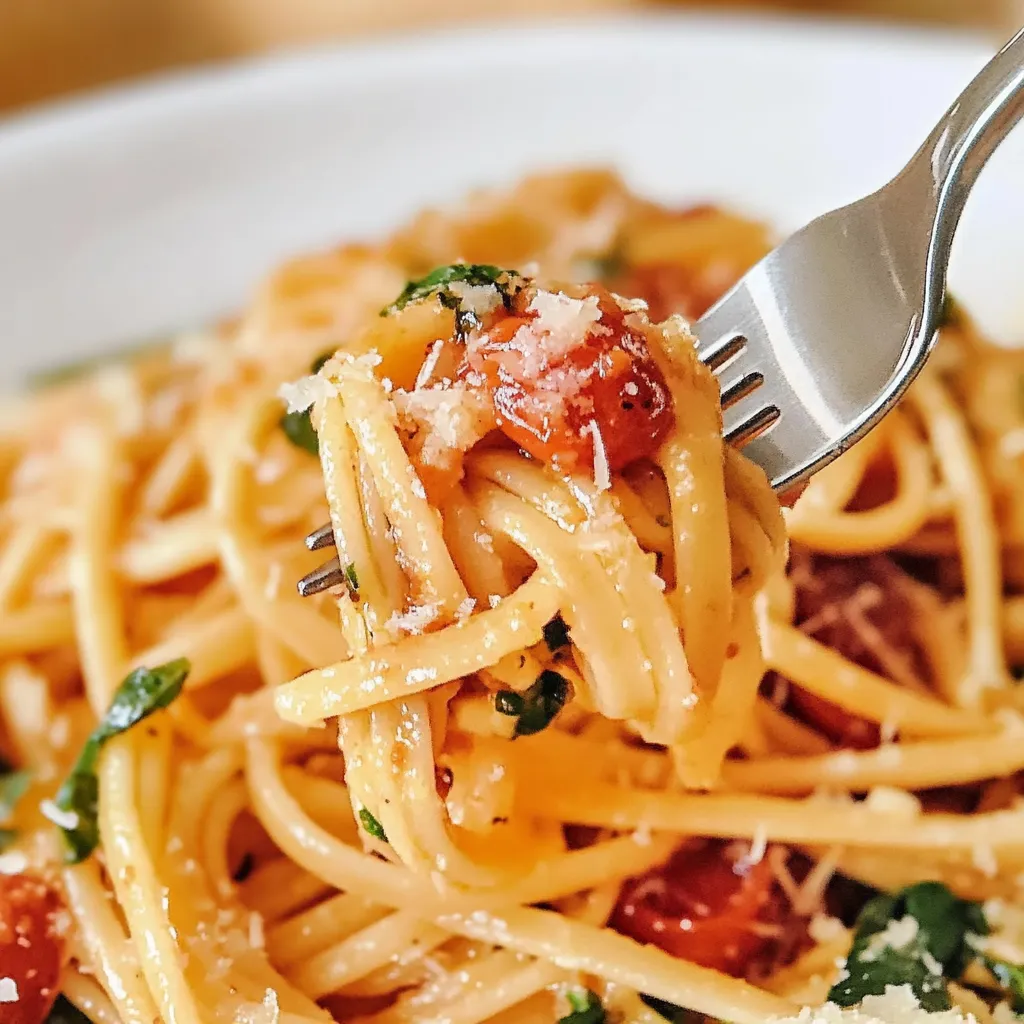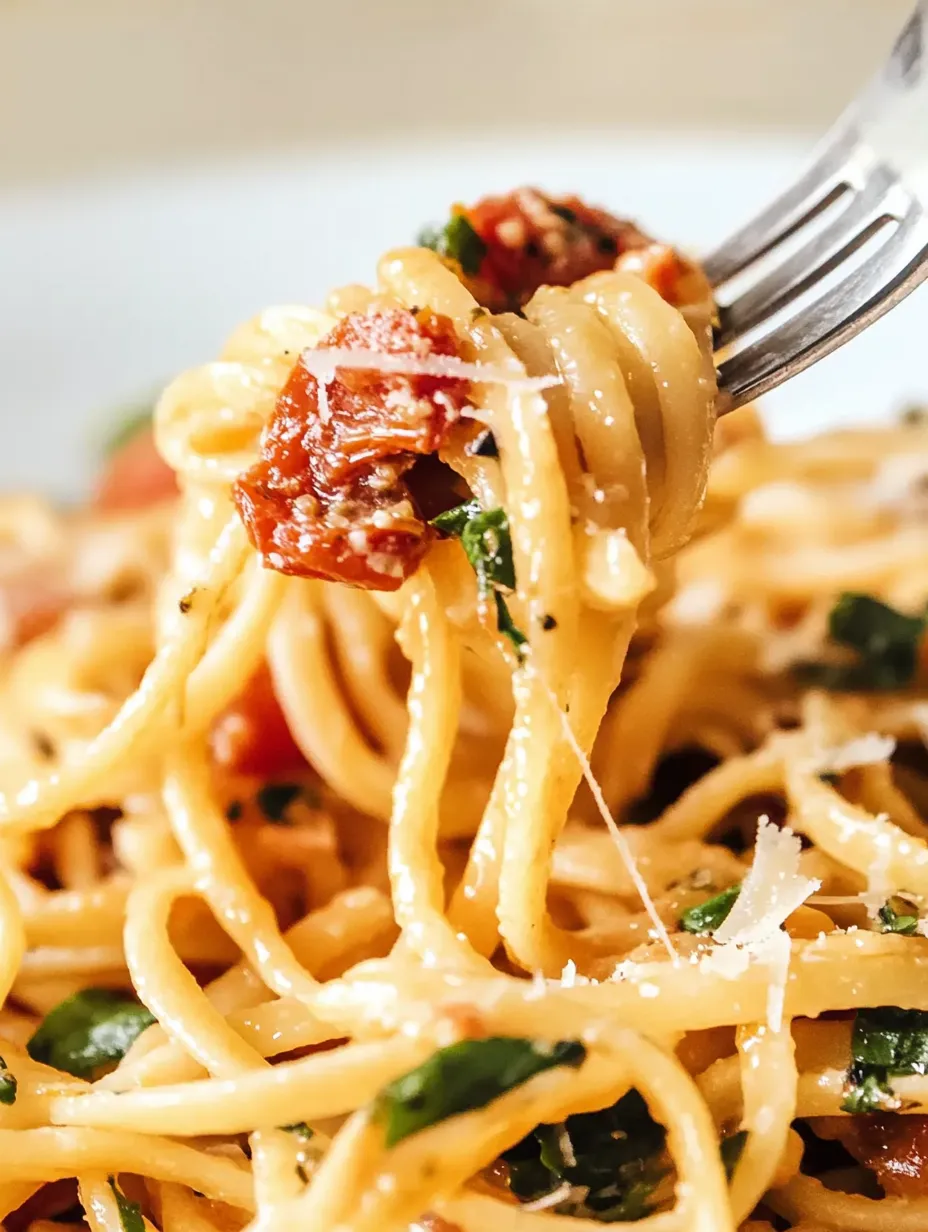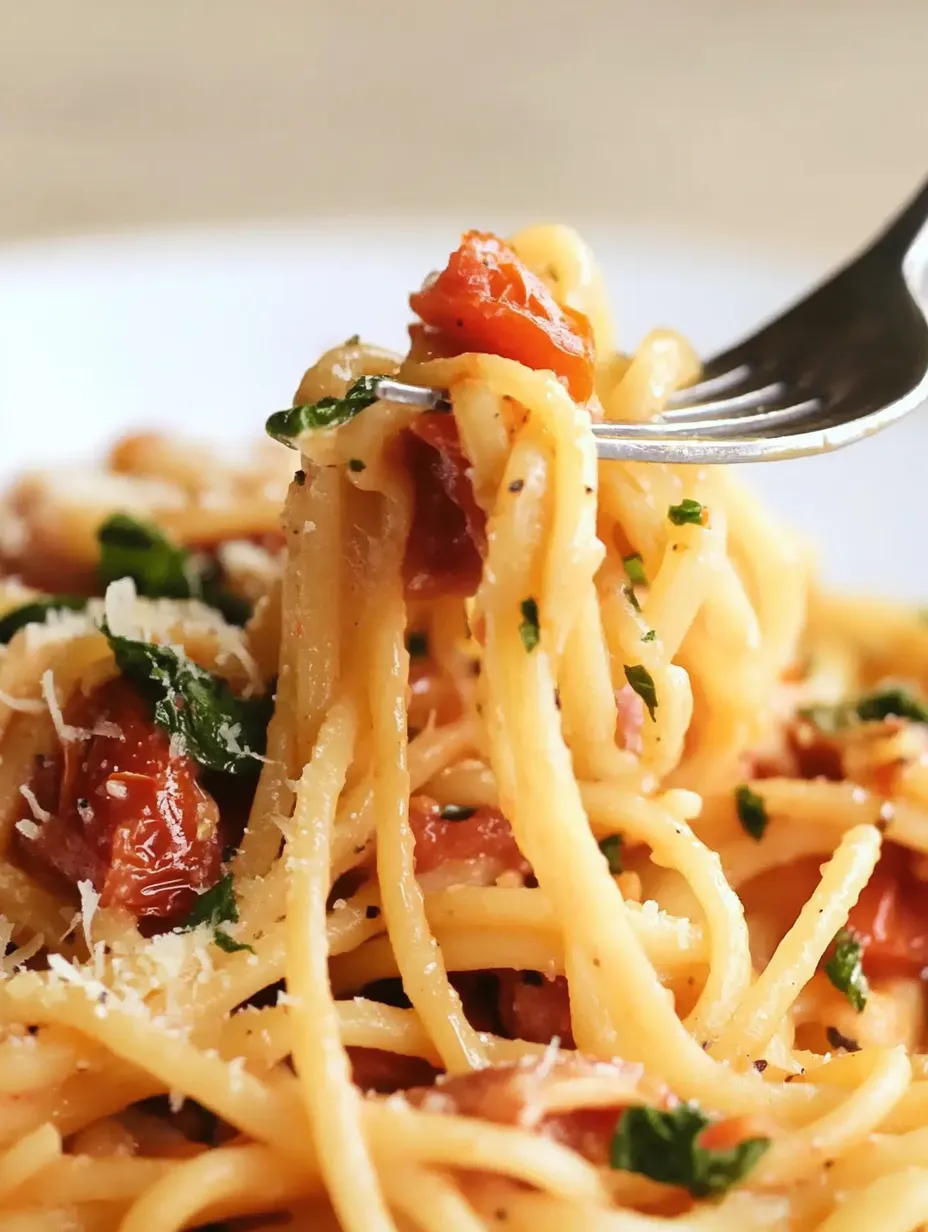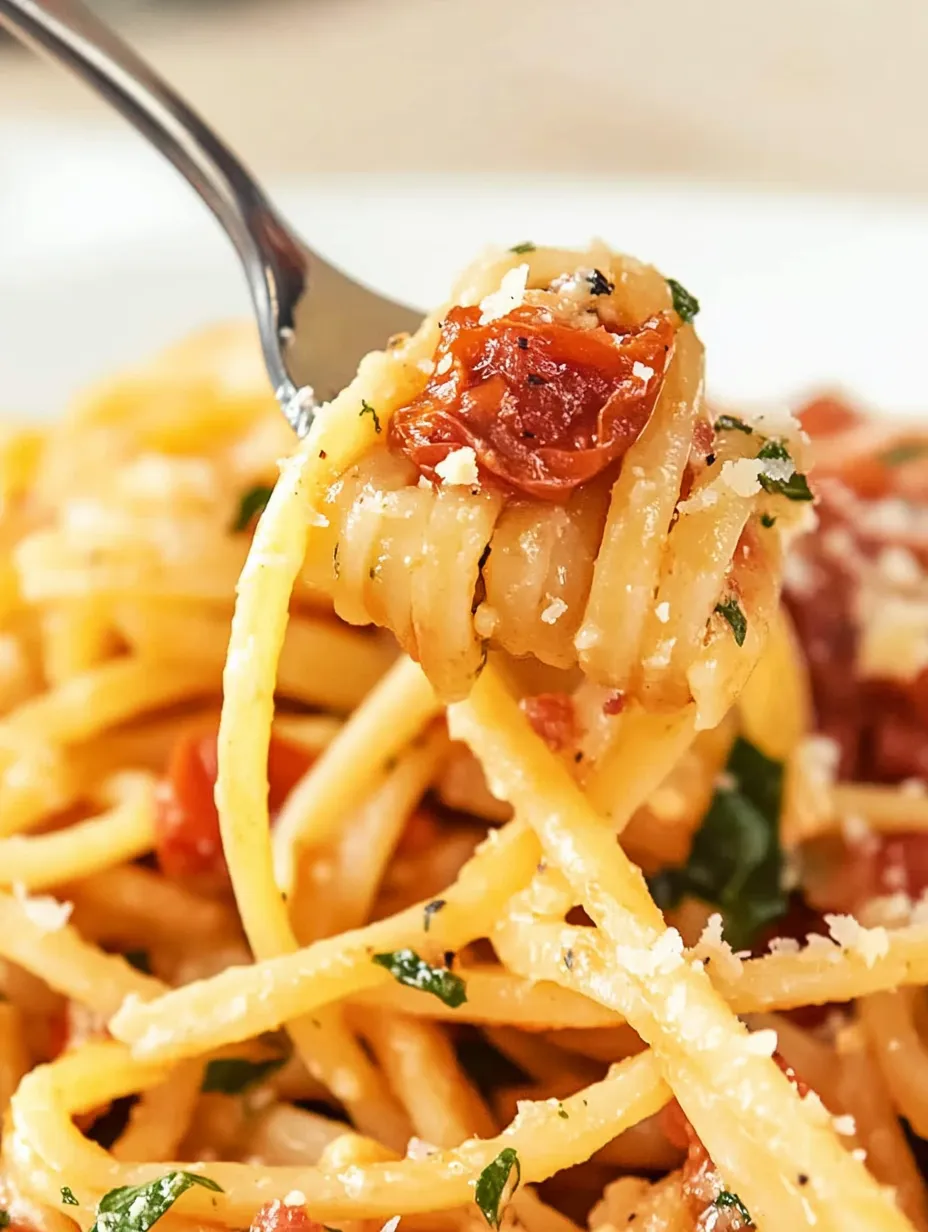 Pin it
Pin it
One-pot pasta creates something extraordinary through brilliant simplicity. By cooking pasta directly in its sauce, each strand absorbs a perfect blend of flavors from fire-roasted tomatoes, fresh herbs, and savory broth. This method transforms basic ingredients into a restaurant-worthy dish while keeping cleanup remarkably simple. The pasta emerges perfectly al dente, coated in a silky sauce that tastes like it simmered for hours rather than minutes.
Last week I made this for impromptu dinner guests, and they couldn't believe it wasn't a long-simmered sauce from scratch. My neighbor now keeps the recipe posted inside her cabinet door, claiming it's saved countless weeknight dinners when time runs short.
Essential Ingredient Selection
Pasta Foundation
- Linguine: provides ideal surface area for sauce absorption
- Quality dried pasta: offers better texture than budget brands
- Straight pasta shapes: work better than short cuts in this method
Aromatic Elements
- Fresh garlic: should feel firm without signs of sprouting
- Sweet onions: create better flavor than sharp varieties
- Fresh basil: brings brightness impossible to achieve with dried
Liquid Components
- Fire-roasted tomatoes: offer deeper flavor than standard canned
- Rich chicken stock: provides better results than basic broth
- Fresh lemon: adds crucial brightness to finished dish
 Pin it
Pin it
Through extensive testing, I discovered that slicing garlic rather than mincing it prevents burning during the cooking process. A chef friend explained that larger pieces develop sweeter flavor while small pieces can become bitter. This simple adjustment transformed the final taste of the dish.
Essential Method
Initial Assembly
Place straight-sided skillet or large pot on counter. Add uncooked linguine, creating base layer. Arrange thinly sliced onions, garlic, and tomatoes over pasta. Tear fresh basil leaves and distribute evenly. Add lemon zest and juice. The order of ingredients affects final cooking results significantly.
Liquid Integration
Pour measured chicken stock carefully over ingredients. Drizzle with olive oil and season thoughtfully with salt and pepper. Ensure pasta strands remain submerged in liquid while maintaining even distribution of other components throughout pan.
Cooking Process
Place pan over high heat and bring to vigorous boil. Maintain boil while stirring frequently with tongs to prevent pasta from sticking together. Continue cooking for eight to ten minutes until pasta reaches desired tenderness and liquid reduces to create silky sauce. Pay attention to timing as pasta can quickly move past ideal texture.
Final Enhancement
Remove pan from heat immediately when pasta reaches proper doneness. Add freshly grated parmesan cheese, stirring gently to incorporate while sauce thickens slightly. Allow mixture to rest briefly, enabling cheese to melt completely and sauce to achieve perfect consistency.
My first attempt at this dish taught me valuable lessons about pan selection. Using a deep pot resulted in unevenly cooked pasta and soupy sauce. A seasoned cook later explained that proper evaporation requires adequate surface area. Now I always choose my widest skillet, and the results are consistently perfect.
Professional kitchens often rely on one-pot methods during busy service times, proving that efficiency doesn't require sacrificing quality. While developing this recipe, I found that this technique actually creates superior flavor compared to traditional methods of cooking pasta and sauce separately.
 Pin it
Pin it
Perfect Pairings
Bread Options
Serve alongside crusty Italian bread for sauce soaking. Offer garlic-rubbed crostini for elegant touch. Consider focaccia for authentic Italian meal.
Fresh Additions
Provide simple green salad dressed with vinaigrette. Create quick cherry tomato salad with basil. Offer roasted vegetables for complete meal.
Wine Selections
Match with light Italian red wine like Chianti. Consider crisp Pinot Grigio for white preference. Offer Prosecco for celebratory touch.
Creative Variations
Vegetable Additions
Incorporate halved cherry tomatoes for fresh burst. Add sliced mushrooms for earthiness. Consider baby spinach for nutrition boost.
Protein Options
Add shrimp during final five minutes. Consider Italian sausage pieces precooked slightly. Try chicken strips seasoned simply.
Herb Alternatives
Experiment with fresh oregano for traditional flavor. Try thyme for subtle earthiness. Consider sage during autumn months.
Storage Success
Cooling Process
Allow pasta to cool completely before storing. Transfer to shallow container for quick cooling. Avoid covering until fully cooled to prevent condensation.
 Pin it
Pin it
Reheating Method
Warm gently in skillet with splash of water. Avoid microwave which can create rubbery texture. Add fresh herbs after reheating for brightness.
Freezing Guidelines
Portion into individual servings before freezing. Use freezer-safe containers with minimal headspace. Label clearly with date and contents.
The most valuable discovery in developing this recipe came from an Italian grandmother who watched me struggling with traditional pasta methods. "Why make extra work?" she asked, demonstrating how cooking everything together creates better flavor while saving time. Her wisdom revolutionized not just this dish but my entire approach to pasta cooking. Sometimes the most impactful cooking lessons come from challenging our assumptions about "proper" technique.
Frequently Asked Questions
- → Why cook pasta this way?
- Cooking everything in one pot creates flavorful pasta and sauce with less cleanup.
- → Can I use different pasta?
- Yes, any long pasta works but cooking time may vary slightly.
- → Why a wide skillet?
- Allows pasta to lay flat and liquid to reduce properly.
- → Can I add protein?
- Yes, add cooked chicken, shrimp, or Italian sausage at the end.
- → How do I store leftovers?
- Keep in airtight container in fridge up to 3 days. Reheat with splash of broth.
